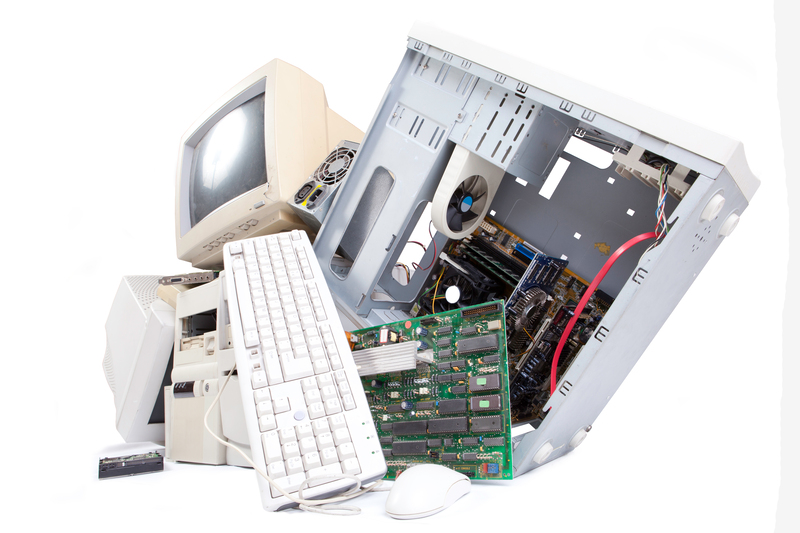Responsible Ways to Handle Used PPE Materials
The global pandemic has drastically increased the usage and disposal of Personal Protective Equipment (PPE) such as masks, gloves, gowns, and face shields. While critical for safety, improper disposal of PPE can cause significant environmental harm and health hazards. This comprehensive guide explores responsible methods for managing used PPE materials, ensuring safekeeping of communities and the environment.
Understanding PPE Waste: Challenges & Risks
Personal Protective Equipment (PPE) is essential for safeguarding individuals against hazardous materials, infections, and diseases. However, the widespread use of disposable PPE has led to a surge in medical waste, particularly during health crises. Let's look at the specific challenges:
- Environmental Impact: Most single-use PPE is made from non-biodegradable plastics like polypropylene, leading to massive landfill accumulation and microplastic pollution.
- Public Health Risks: Improperly discarded PPE can transmit pathogens, affecting sanitation workers and the public.
- Wildlife Threats: Discarded PPE often ends up in waterways, threatening marine and terrestrial animals through ingestion or entanglement.
- Resource Consumption: The frequent manufacturing and disposal of PPE strain resources and contribute to greenhouse gas emissions.
To handle used PPE responsibly, informed and sustainable management methods must be integrated into both household and commercial routines.

How to Collect and Store Used PPE Safely
Safe handling of used PPE begins with mindful collection and temporary storage. Here are the recommended steps:
1. Designate Collection Points
- Install clearly labeled waste bins in high-traffic areas of homes, offices, and medical facilities. These bins should be dedicated to PPE waste only.
- Use bins with lids to minimize exposure and avoid contact with other waste types.
2. Use Sealable Bags
- Place used masks, gloves, and other PPE in a sealable, leak-proof bag before disposing of them in waste bins.
- For potentially contaminated PPE, double-bagging is advisable to further minimize risk.
3. Encourage Personal Responsibility
- Educate staff, family members, and the public on the importance of responsible PPE disposal through signage and training.
- Always wash hands with soap and water or use hand sanitizer after handling used PPE.
Best Practices for PPE Waste Disposal
Not all PPE waste is created equal. Some disposable PPE, like surgical masks and nitrile gloves, must be disposed of as medical waste, especially if contaminated. Follow these best practices for responsible PPE disposal:
Segregate PPE Waste
- Never mix used PPE with recyclable waste streams.
- Medical or hazardous PPE should be separated from regular trash.
- Install color-coded waste bins to encourage proper sorting.
Follow Local Guidelines
- Consult your city or region's public health and waste management authorities for up-to-date guidance.
- Some jurisdictions offer specialized collection or incineration services for contaminated PPE.
- Adhere to regulations for tracking and manifesting biomedical waste, if applicable.
Never Litter PPE
- Throwing used masks, gloves, or face shields on streets or in nature is both hazardous and irresponsible.
- Dispose of all PPE in designated waste bins or return them to authorized collection points.
Can Used PPE Be Recycled?
While most disposable PPE is not designed for traditional recycling processes due to contamination and material composition, innovative solutions are emerging to address the PPE waste crisis.
Recycling Options for PPE Materials
- Specialized Recycling Programs: Some companies and hospitals partner with recycling firms to process used PPE into new materials for items like construction products, road surfaces, or park benches.
- Thermal Processes: Technologies such as pyrolysis and high-temperature incineration can convert plastic PPE waste into energy or usable fuels, reducing landfill pressure.
- Pilot Collection Campaigns: Public programs offering PPE collection bins--especially at medical centers or transport hubs--may divert significant waste from landfills.
Important: Only PPE that is not contaminated with bodily fluids should be considered for recycling programs. Always check with recycling operators for accepted items.
Sustainable Alternatives to Disposable PPE
The best way to minimize PPE waste is to reduce reliance on single-use products whenever safe and possible. Consider these responsible alternatives:
- Reusable Masks: Cloth masks made from multiple layers can be washed and reused, decreasing disposable mask waste.
- Washable Gowns and Face Shields: Designed for repeated use after proper sanitization, these options are especially suitable in non-hazardous settings.
- Biodegradable PPE: Some manufacturers now offer compostable gloves and masks made from natural fibers.
- Proper Maintenance: Follow thorough cleaning and disinfection protocols to ensure reusable PPE remains effective.
Steps for Proper PPE Disposal at Home
For households, responsible ways to handle used PPE materials are straightforward but crucial for preventing spread and pollution:
- Contain Used PPE: Place all used masks, gloves, and other PPE in a dedicated disposable bag immediately after use.
- Seal and Label: Tightly seal the bag and, if possible, label it as "PPE Waste" to alert sanitation workers.
- Dispose Responsibly: Place the sealed bag into your regular trash. Do not place PPE items in your recycling bin.
- Hand Hygiene: Thoroughly wash or sanitize hands after handling used PPE or touching waste containers.
Managing PPE Waste in Healthcare & Occupational Settings
Healthcare facilities, laboratories, and industries using high volumes of protective gear must adhere to stringent regulatory standards for mitigating risks. Effective strategies include:
Implementing a PPE Waste Management Plan
- Policy Development: Establish clear written policies for PPE usage, collection, and disposal.
- Regular Training: Train all staff on new protocols, including correct segregation, donning, doffing, and disposal techniques.
- Audits and Review: Regularly audit PPE waste handling processes to ensure compliance and identify areas for improvement.
Use of Certified Disposal Services
- Partner with certified biomedical waste disposal firms complying with OSHA and environmental regulations.
- Maintain manifests and documentation required for hazardous waste tracking.
Innovative Approaches to Reducing PPE Pollution
Technologies and community initiatives are evolving to address the urgent need for responsible PPE material management:
- PPE Recycling Machines: New machines can sterilize and shred PPE waste for conversion into construction materials or fuel pellets.
- Biodegradable PPE Development: Ongoing research focuses on developing effective disposable gear from plant-based or naturally degradable materials.
- Take-Back Programs: Pharmacies and retail stores may offer safe collection points for used masks and gloves, reducing littering and landfill.
Community Involvement: Everyone Plays a Role
Addressing the PPE waste crisis requires broad participation. Here's how individuals, organizations, and governments can make a difference:
- Educate and Inform: Share information about responsible ways to dispose of PPE in schools, businesses, and online communities.
- Organize Clean-Ups: Volunteer for or organize community PPE clean-up events in parks, beaches, and urban centers.
- Support Legislation: Advocate for public policies that regulate PPE manufacturing, safe disposal, and recycling incentives.
- Be a Role Model: Set an example by always disposing of PPE properly and encouraging others to do the same.
Global Perspectives: Case Studies of PPE Waste Management
Around the world, various strategies have emerged for managing PPE waste, illustrating how different contexts shape solutions:
Singapore:
- Implemented widespread installation of dedicated PPE bins in public spaces.
- Launched educational campaigns on responsible PPE disposal.
United Kingdom:
- Authorities distributed clear guidelines for household and commercial PPE disposal throughout the pandemic.
- Pilot programs tested recycling used masks into building materials.
United States:
- Some cities partnered with private companies to develop PPE recycling solutions and expand hazardous waste collection routes.
- State medical boards updated waste handling regulations to address the flood of PPE waste.

Key Takeaways: The Most Responsible Ways to Handle Used PPE Materials
- Don't Litter or Recycle Used PPE with Household Recyclables: Never throw PPE on the ground or place it in standard recycling bins.
- Segregate and Contain: Always use designated bins and sealable bags.
- Consult Local Guidance: Rules for PPE disposal can vary, so stay informed and compliant.
- Support Reuse, Recycling, and Innovation: When safe, opt for reusable PPE and engage in or support recycling programs for non-contaminated items.
- Promote Awareness: Community involvement and education are vital in spreading best practices for responsible PPE disposal.
Conclusion: Building a Culture of Responsibility
The surge in PPE use has underscored the need for sustainable habits to protect people and the planet. By embracing responsible ways to handle used PPE materials, each of us can help mitigate pollution, prevent disease transmission, and conserve valuable resources.
With clear guidelines, community participation, and ongoing innovation, we can manage PPE waste responsibly and pave the way for a cleaner, safer future. Let's all do our part--one mask, one glove, one responsible choice at a time.
